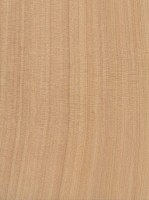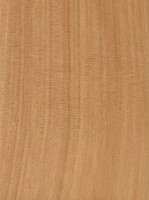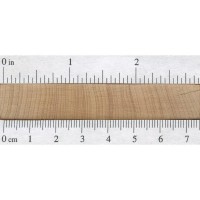 |
Common Name(s): Alligator Juniper Scientific Name: Juniperus deppeana Distribution: Southwestern United States and northern Mexico Tree Size: 30-50 ft (9-15 m) tall, 2-3 ft (.6-1 m) trunk diameter Average Dried Weight: 36 lbs/ft3 (585 kg/m3) Specific Gravity (Basic, 12% MC): .48, .58 Janka Hardness: 1,160 lbf (5,160 N) Modulus of Rupture: 6,700 lbf/in2 (46.2 MPa) Elastic Modulus: 650,000 lbf/in2 (4.48 GPa) Crushing Strength: 4,120 lbf/in2 (28.4 MPa) Shrinkage: Radial: 2.7%, Tangential: 3.6%, Volumetric: 7.8%, T/R Ratio: 1.3 |
Color/Appearance: No data available.
Grain/Texture: No data available.
Rot Resistance: No data available.
Workability: No data available.
Odor: No data available.
Allergies/Toxicity: Although severe reactions are quite uncommon, Alligator Juniper has been reported to cause skin and respiratory irritation. See the articles Wood Allergies and Toxicity and Wood Dust Safety for more information.
Pricing/Availability: No data available.
Sustainability: This wood species is not listed in the CITES Appendices, and is reported by the IUCN as being a species of least concern.
Common Uses: No data available.
Comments: So named for the bark’s resemblance to the rough and textured skin of an alligator. A small coniferous tree that’s technically related to the widely popular Eastern Red Cedar (Juniperus virginiana).







Hello, just got your book and liking it a lot. I have a question about Juniperus communis is it similar to deppeana? I have some spoons from eastern Europe and they have this distinctive black pepper aroma. Was wondering what kind of Juniper is that. Thanks!
I don’t have any experience with J. communis, so I can’t directly comment on that. It appears that, at least among juniper species, it doesn’t closely resemble alligator juniper in that it has needle-like foliage, while alligator juniper has a scale-like foliage. Whether that translates to difference in wood too remains to be seen.
We have Utah Juniper here in Utah and Arizona. How does that differ from Alligator Juniper or are they one and the same? The grain looks the same. I hear most places will not mill the wood due to Sand accumulation in the outer layers which dulls blades.